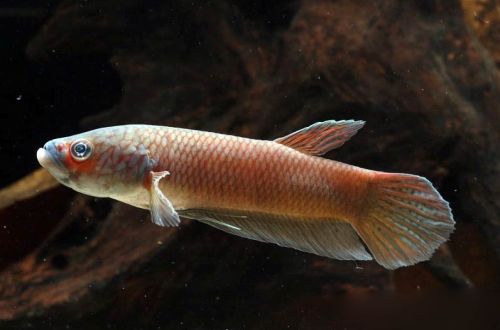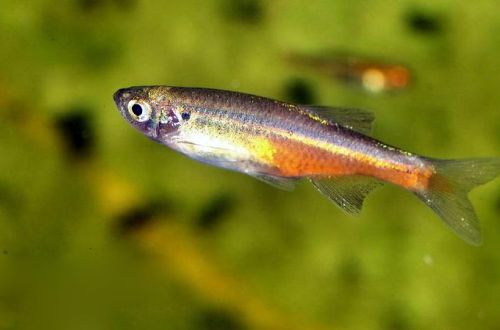
Notobranchius Foerschi
Nothobranchius foerschi, scientific name Nothobranchius foerschi, belongs to the family Nothobranchiidae. A beautiful miniature African fish, which has one amazing and at the same time sad feature – a very short lifespan. In nature, she lives a little over a year, but during this time she manages not only to grow up, but also to leave offspring. Lives a little longer in home aquariums, however, to maintain the population, you will have to do reproduction, which is not so difficult to do.

Habitat
The homeland of this species is the territory of modern Tanzania (Africa). Wild specimens for subsequent scientific classification were caught in the Ruvu River near the coastal city of Bagamoyo. Inhabits swampy reservoirs and overgrown river floodplains on the flat part. The water level is variable, depending on the season of the year, in some periods there is complete drying.
Description
Notobranchius Fourshey have a pronounced sexual dimorphism. Males are noticeably larger and reach 5.5 cm in length, have a bright iridescent coloration with a rich blue, red and yellow tint, depending on the specific region of origin. Females, on the contrary, barely grow up to 4 cm and do not differ in a variety of colors.
Food
In nature, they feed on small aquatic insects, their larvae and crustaceans. In a home aquarium, it is also recommended to serve protein-rich food, such as daphnia, bloodworms, brine shrimp, etc., either live or frozen.
Feeding exclusively dry food is fraught with a lack of essential nutrients, as a result, the fish will become unable to reproduce.
Maintenance and care
A group of 3-4 individuals will feel great in a tank of 50 liters or more. The design uses a large number of plants that mimic the swampy natural habitat. Any soft substrate.
The set of equipment consists of a heater, aerator, lighting and filtration systems. The latter is selected and installed taking into account the fact that Fourshey Notobranchius do not tolerate strong currents, so the filter must combine performance and at the same time create a weak movement of water. For example, outgoing streams can be directed to the glass of an aquarium or other obstacle.
The recommended pH and dGH parameters are in the region of neutral and high hardness, respectively. Where the water is too soft, you will have to use reagents to increase dGH. The water temperature should be kept below the maximum mark of 24°C, otherwise spawning may be provoked.
Breeding / breeding
Spawning is carried out in a separate tank with a size of 10 liters or more. In its design, a substrate based on artificial or coconut fibers is used, as a rule, placed in separate containers that are easily removed from the water. Plants are not required. Of the equipment, a simple sponge filter, a heater and a lamp for lighting are used.
In the summer months, the selected pair of fish is transferred to a spawning aquarium, in which the water parameters and temperature must be completely identical to the general one. Then, over several days, the water level is lowered and the temperature is raised to 25°C, simulating the start of the dry season. Don’t forget to feed your fish!
Fourshi’s Notobranchius begin mating season. The female lays eggs directly into the substrate, and the male fertilizes them on the spot, this is where the parental instincts end. The fish are brought back to avoid a temperature shock, they are placed in a bag filled with water from the spawning aquarium, tied up and left to float on the surface in the general aquarium. After a few hours, the temperature levels off and the fish can be safely removed from the bag.
At this time, all water is drained from the spawning aquarium, the substrate with eggs is removed and left in a dark, dry and warm (22–25 ° C) place for 3 months. After this time, the dried substrate is immersed in water and fry soon appear. They grow very quickly, by the end of the first month of life they become sexually mature.





